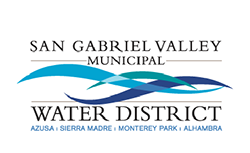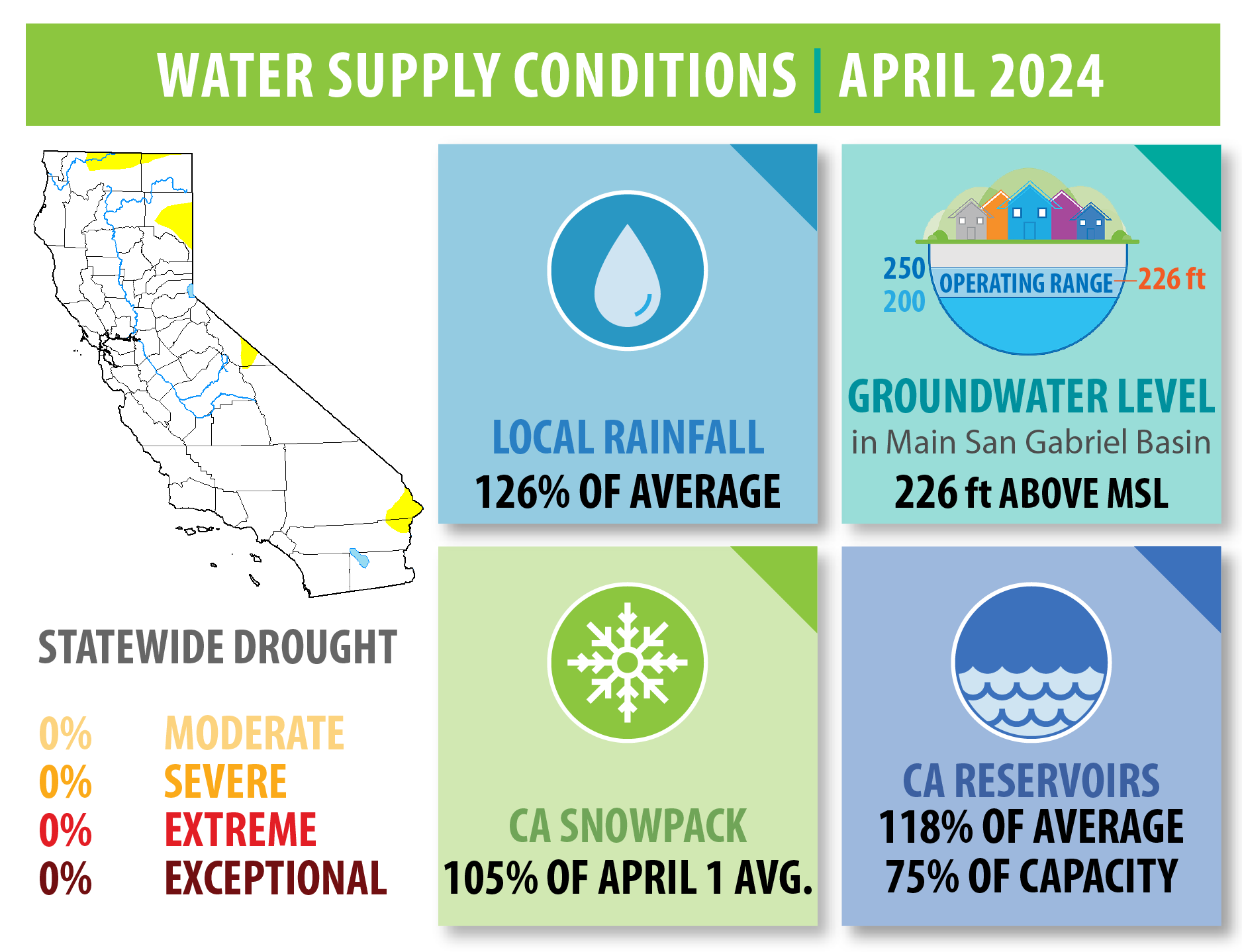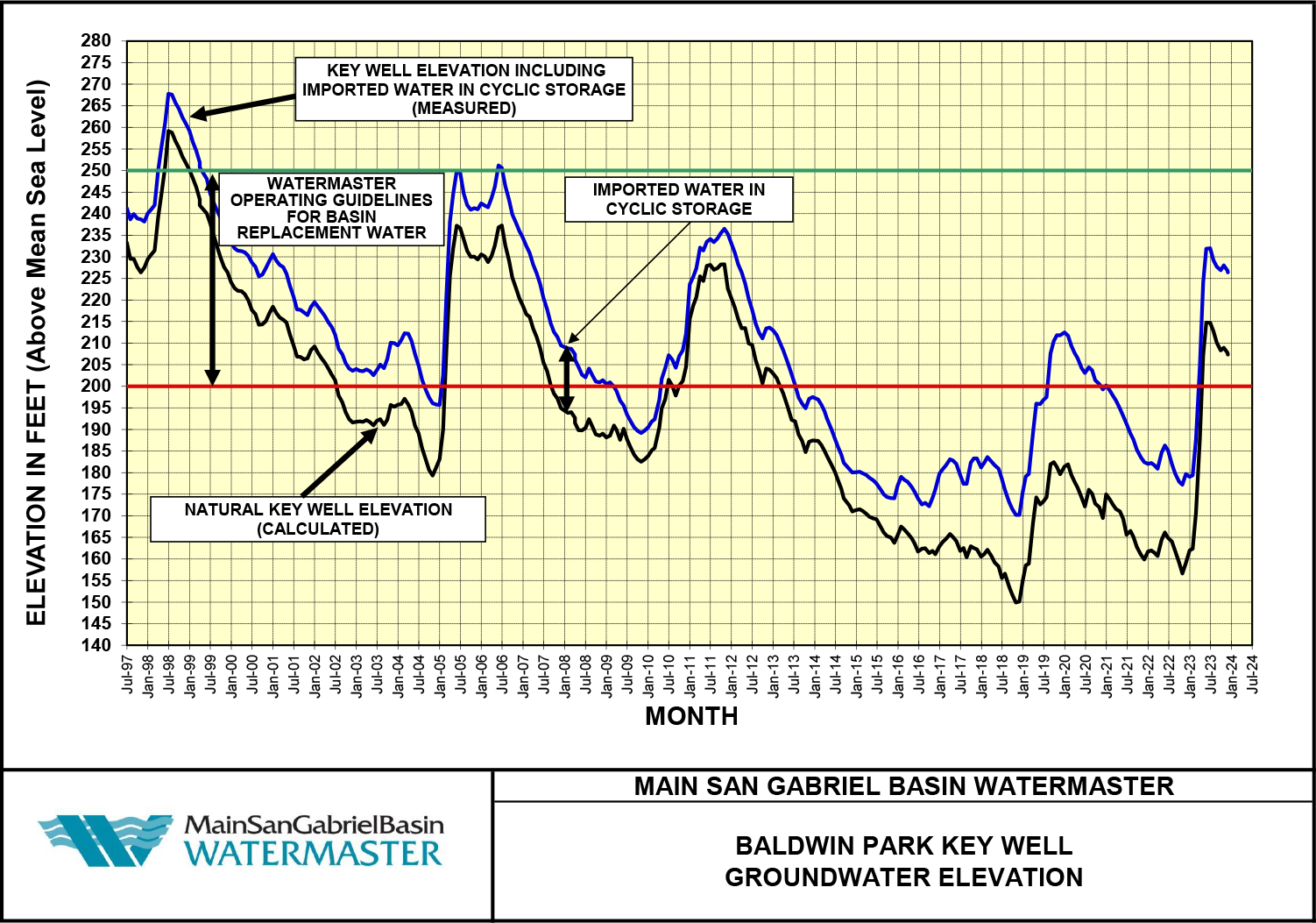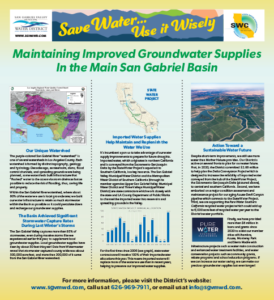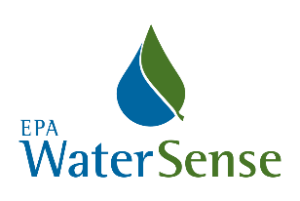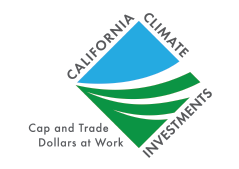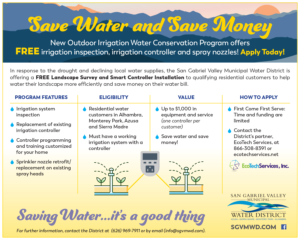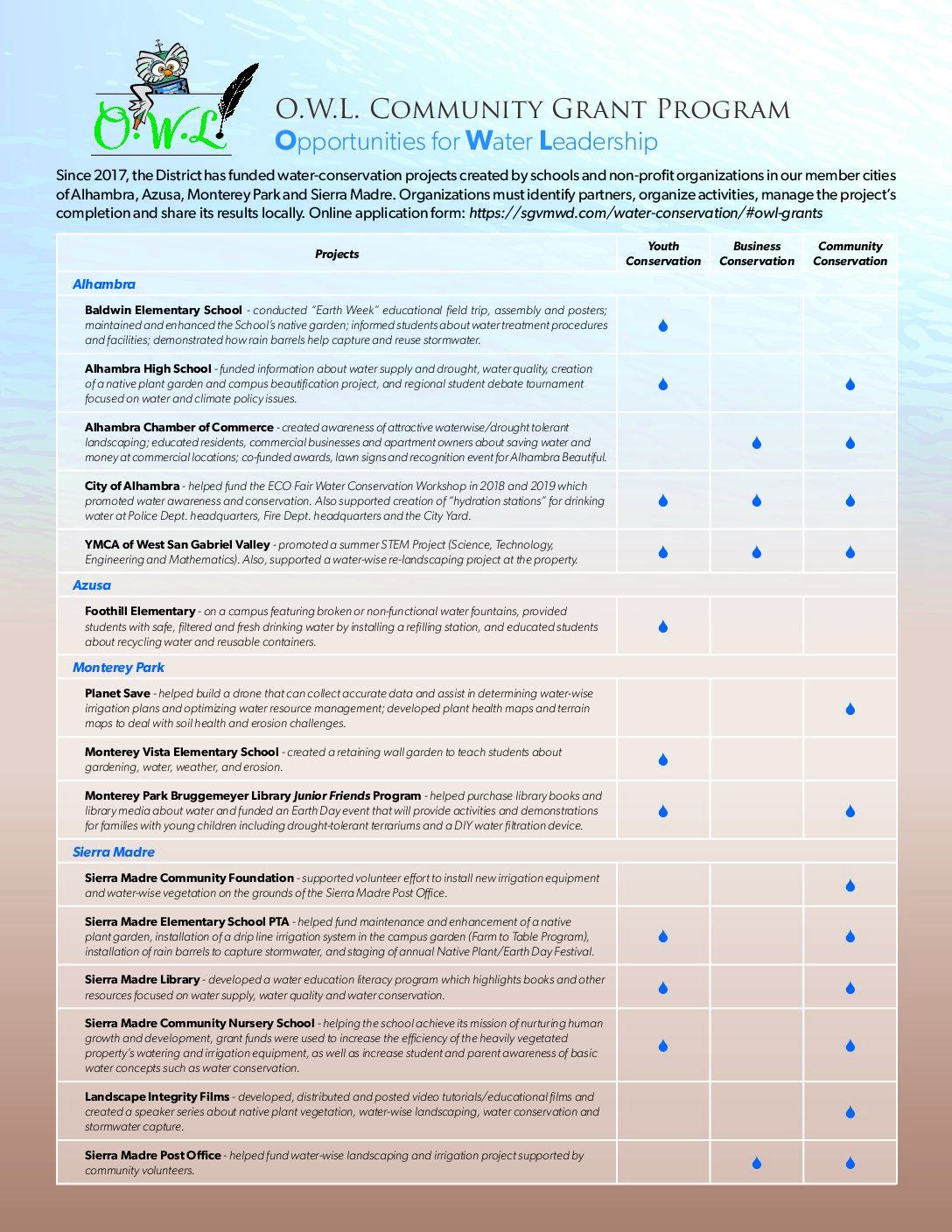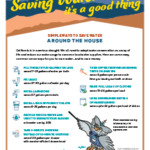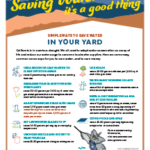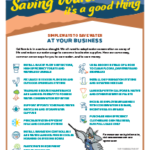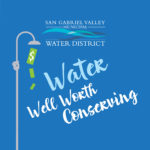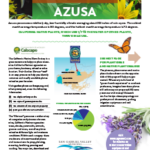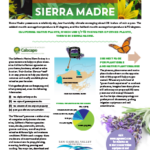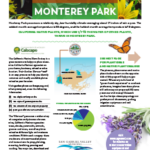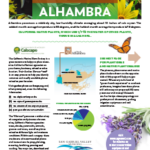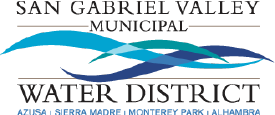Water Conservation
Water conservation is the least expensive source of water that we have because a gallon saved is a gallon that does not need to be imported or produced. We all need to do our part to use water as efficiently as possible, so this vital resource remains readily available, now and in the future.
Water-saving practices cost little to nothing to implement and the water and financial savings can be substantial. SGVMWD offers numerous programs and resources to help you conserve!
“Save Water…Use it Wisely!”
New District Public Information Theme Reflects Changed Water Supply Conditions
As water supply conditions fluctuate, the District updates and refreshes its public information theme and messaging. Severe drought, decreased water supplies and heavy precipitation each call for refined messaging to inform stakeholders. After several years of severe drought, recent heavy precipitation and water supply improvements statewide and in the San Gabriel Valley, the District has developed a new theme reflecting awareness that supply conditions have improved while still encouraging wise use of our precious natural resource.
The design replaces the former theme, “Saving Water…it’s a good thing!” and incorporates new green and blue coloring along with water features. The new theme will be utilized on most District media and publications. We even have a fun design extension featuring H2Owl for school, youth and community activities!
After California’s historic, five-year drought that ended in 2015, the Governor issued an executive order prohibiting water waste and calling on all residents to “make conservation a California way of life.” The order resulted in a statewide plan enacting long-term conservation measures and water use targets for urban water systems.
SGVMWD supports water conservation by partnering with our member cities to provide funding and technical assistance for water-efficient technology and equipment, infrastructure programs, and public education. Since 2010, the District has been committed to funding and creating a variety of water conservation pilot projects throughout the service area. These projects are taking place in each of our member cities and involve elements of water-efficient technology and equipment, water-wise and California Native plants, and in-school curriculum.
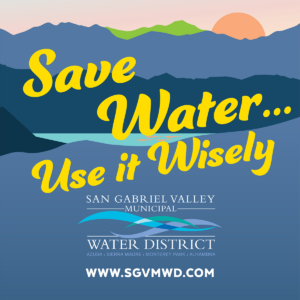
Overview of Drought
Fall 2023 Drought and Water Supply Update
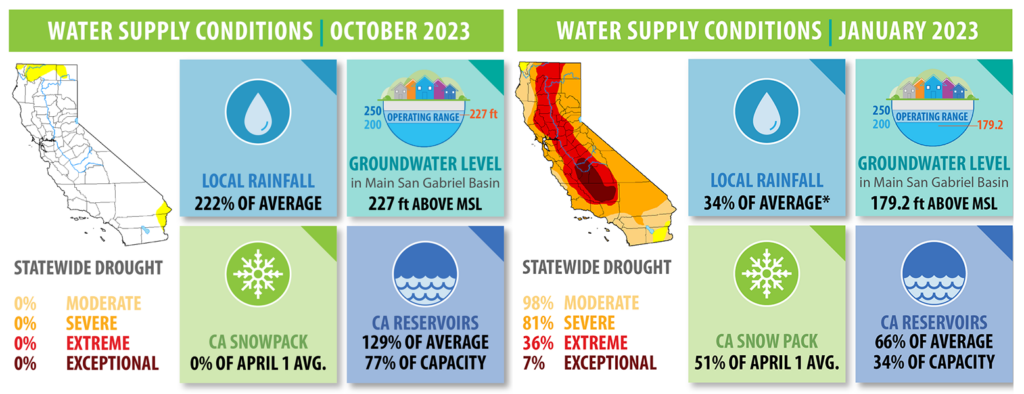
After beginning 2023 in a fourth consecutive year of drought with declining water supplies, significant winter storms changed the local and statewide water landscape. As of October 2023, as new “water year” recordkeeping began statewide and in the San Gabriel Valley, nearly 100% of California is drought-free. We received nearly 40 inches of rain in the past 12 months, compared to an historic average of about 18 inches of rain per “water year.” After the wet winter of 2022-2023, late summer storms like Hurricane Hilary caused some regions such as southern California to record the wettest summer on record.
Some researchers believe the last drought never ended and that our region is actually more than two decades into a “mega-drought,” a hydrological event that is on par with the worst dry spells of the past millennium. In the big picture, given Southern California’s naturally warm and dry climate and the effects of climate change, we are either in drought, recovering from drought or preparing for the next drought. And droughts are getting more extreme due to climate change.
The late-season storms, coupled with cooler temperatures, higher humidity and greater cloud cover, led to less evaporation, helping keep soil moisture at record high levels in areas that really needed it. Local groundwater, which improves more slowly due to the time it takes stormwater runoff to percolate down to groundwater levels, has risen more than 50 feet year-to-date. All major reservoirs, outside of the Colorado River and Lake Mead, are in good shape thanks to the winter’s deep snowpack. And, imported water allocations from the State Water Project are at 100% for the first time since 2006, meaning there is more imported water flowing to our area to help replenish groundwater levels.
The Main San Gabriel Basin captured more than 95% of stormwater to supplement local groundwater supplies in the storm surge earlier this year, which is much different than other watersheds that convey the majority of their stormwater to the Pacific Ocean as a flood control measure. Data from Watermaster reveal that of the more than 500,000 acre-feet of stormwater captured this year, about 300,000 AF came from the San Gabriel River watershed.
We must remember we live in a region where most years are dry, infrastructure is aging, drought will return, and climate change makes the work of water planning and delivery challenging. The last major drought period began in 2014-2015 and lasted about 5 years. The reality remains that we use more water than Mother Nature provides and given Southern California’s naturally warm and dry climate and the effects of climate change, we are either in drought, recovering from drought or preparing for the next drought. And droughts are getting more extreme due to climate change.
We know you have questions about the drought…and the Valley’s water supply…and water conservation…and more. We’ve listened to you and have prepared answers for you in an easy-to-read “Frequently Asked Questions” (FAQ) format. We provide questions and answers about a) drought in general, b) present drought conditions; c) the basics of our water supply in the San Gabriel Valley, and d) an introduction to the District’s water conservation programs. In addition, we provide links to a new source of drought and water supply information in the San Gabriel Valley, “The Waters That Connect Us” website, sponsored by the Main San Gabriel Basin Watermaster (www.thewaterthatconnectus.com).
Ensuring a safe and sustainable water supply in the San Gabriel Valley is the District’s mission and is critical to our health, environment and economy. We hope we can help you learn as much about our water resource as you do about other public policy issues such as education, transportation, health care, public safety, energy and foreign affairs. Residents will increasingly vote on important water policy matters at federal, state, county and municipal level so we will try to keep you informed and engaged in the water dialogue.
If you have another question, please submit it to us by email (info@sgvmwd.com) or call 626-969-7911.
FAQs | Overview of Drought
Wikipedia defines drought as an extended period when a region notes a deficiency in its water supply whether surface or underground water. A drought can last for months or years and occurs when a region receives consistently below average precipitation. Intense drought can cause significant damage to the environment, public health and the local economy (e.g. local fire danger, mudslides, subsidence, water rate increases, mandatory reductions, rationing, etc.).
According to the California Department of Water Resources, when drought occurs is a function of drought impacts to water users. Drought is a condition of water shortage for a particular user in a particular location. Hydrologic conditions constituting a drought for water users in one location may not constitute a drought for water users in a different part of California or for users with a different water supply. Although persistent drought may be characterized as an emergency, it differs from typical emergency events. Drought occurs slowly, over a period of time. Drought impacts increase with the length of a drought, as carry-over supplies in reservoirs are depleted, stormwater runoff diminished, water levels in groundwater basins decline and the impacts of climate change expand.
The most significant statewide droughts occurred during 1928-34, 1976-77, 1987-92, and 2007-09. Southern California has experienced six major droughts since 1969 as shown on the graph below, including our present drought. A significant regional drought occurred in parts of Southern California in 1999-2002, and from 2014-2019. Looking back further, ring records from thousands of trees across western North America, analyzed to reconstruct soil moisture over the last 1,200 years, suggest that 2000-2018 was the second-driest period, eclipsed only by a mega-drought in the late 1500s.
The graphs below, created by the District and Main San Gabriel Basin Watermaster, show our unpredictable weather conditions: 2/3 of the years show below average rainfall, meaning we tend to have a few very yet years followed by a larger number of very dry years. Drought is normal in southern California and the San Gabriel Valley. Drought will recur over time and is tending to be worse and more extreme due to climate change.
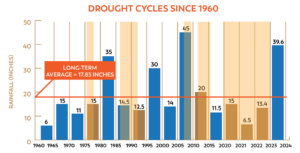
The graphs which follow are courtesy of Watermaster and may be found on their public education website: www.thewatersthatconnectus.com
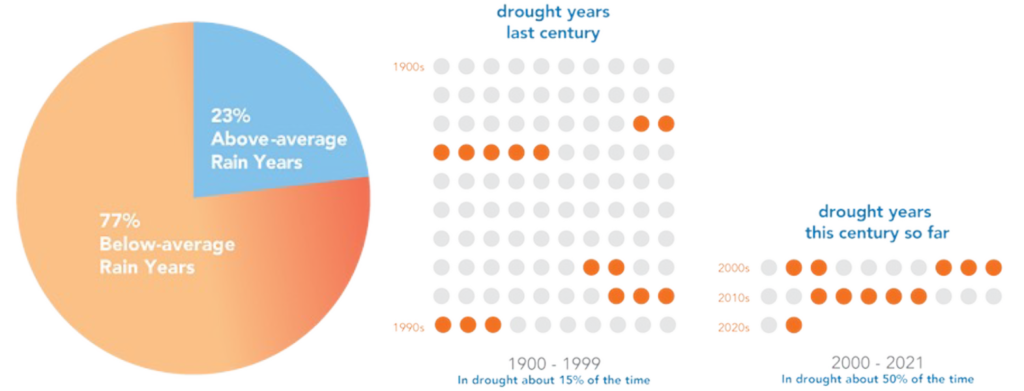
2015-2017
Drought conditions emerged relatively slowly (“it takes a long time to get into a drought and a long time to get out of a drought”). California got less rain in 2013 than in any year since it became a state in 1850. Storage in key state reservoirs was lower than in 1977, one of the two previous driest water years on record, and the state’s snowpack was less than 25% of average. 2014 began with a drought emergency declaration from Governor Brown on January 17, the first such declaration since Governor Schwarzenegger declared a drought emergency in 2009. And, that was followed by an announcement from the California Department of Water Resources on January 31, 2014, that the State Water Project was suspending water deliveries. This meant no replenishment water for our groundwater supplies in the San Gabriel Valley.
As many of us in the San Gabriel Valley will remember, on January 15, 2015, amid our fourth consecutive year of drought, Governor Brown mandated water-use restrictions statewide, requiring cities and towns throughout the state to reduce their water usage as a whole by 25%.
2021-2023
The drought emergency (which is a State-issued policy declaration) beginning in 2015 came to an end in April 2017 following a wet winter in late 2016/early 2017. That drought, itself, came to an end in 2019. Then, in mid-late 2020, another very dry period began and has continued well into 2022. Subsequently, the state issued a new drought emergency in October 2021.
In late 2021, State Water Project deliveries, for the first time in history, were projected at zero percent of plan leading into 2022. Following significant precipitation in late 2021, the planned allocation was raised to 15% in January. However, when the first three months of 2022 turned out to be the driest January-March period in recorded history, the allocation was again reduced down to 5% in March. The graph below shows the decline and variability of State Water Project imported water allocations in recent years, complicating water planning statewide and locally.
In March 2022, Governor Newsom called on all Californians to voluntarily reduce their water use by 15 percent. As of January 2023, the statewide Drought Emergency remains in effect, but statewide mandatory water use restrictions have yet to be imposed.

A drought declaration or emergency may help focus the public’s attention on drought conditions. Recently, due to drought and increased awareness of climate change, people in California pay more attention to water conditions. Newspapers, TV and radio news, and social media “overflow” with news of drought, climate change and what to do about these conditions. Conferences “spring” up in response and many government, business and community organizations have water on their agenda. Drought helps create conditions where legislative and political leaders act on water-related legislation, infrastructure and funding.
Such announcements may also be accompanied by mandatory water use restrictions as occurred in 2015. Residents and businesses statewide and in the San Gabriel Valley responded then by reducing water use by more than 25%! We find consistently that people want to help by saving water.
Unfortunately, complicating our current local water supply conditions is that many Californians, especially southern Californians, are NOT meeting the Governor’s call for voluntary water use reductions of 15%. Per data from the State Water Resources Control Board in spring 2022, southern California had actually increased its urban water use, only reducing water use by 6.4% since July 2021. Conservation levels increased slightly later in 2022, but still had not reached levels accomplished in the most recent drought. This may contribute to further or mandatory water use restrictions.
Absolutely not! Sporadic rain and snowfall events, while helpful in boosting reservoir storage levels, often do not produce enough water to ease a drought. Sustained drought conditions and extreme heat lead to very hot and dry surface conditions, evaporation of surface water and very thirsty vegetation. Those conditions may decrease the amount of precipitation or storm run-off which makes its way to groundwater levels that can be anywhere from 50-450 feet below the surface. It takes time and sustained water availability for runoff to percolate or seep down those long distances to aquifers and groundwater storage areas to end a drought.
The period of late 2021 serves as an example: our region experienced significant precipitation and storm activity, however, the three-month period of January through March 2022 became the driest such period in California history and the drought continued! As December 2022 featured significant precipitation and an “atmospheric river” phenomenon, it remains to be seen if such weather persists and eases the current drought.
Because the San Gabriel Valley Municipal Water District and other water agencies throughout the San Gabriel Valley have employed sound water management practices for several decades, and because the Valley has reduced consumption in recent years through water conservation, the Valley is not in immediate jeopardy of major water shortages. Some people believe in the adage that “we will not run out of water, but we will run out of cheap water.” To a degree, we are protected by larger regional water storage facilities and a reduction in water demand resulting from effective water conservation efforts. Our ability to import water from northern California via the State Water Project, though supplies have fluctuated to lower levels in recent years, also augments local groundwater supplies.
For cities served by the San Gabriel Valley Municipal Water District, we have been preparing for water shortages like this, effectively providing you with “water insurance.” In other words, as residents in our service area use water from local wells, the District and other State Water Contractors help refill or replenish the groundwater that supplies those wells with imported water delivered via the State Water Project. Our water reserves are referred to as “cyclic storage.”
The current, worsening drought (2021-2023) means less water is available in the Valley and in the local mountains to help supply our local groundwater system, and the recent reduction (2021-2023) of water deliveries via the State Water Project means we have less water available to replenish those groundwater supplies. Thus, our water insurance is declining – reservoir levels are lower, groundwater levels are lower, and snowpacks throughout local and regional mountain ranges are lower.
Our local drought results from a “triple threat” lack of precipitation in the following geographic areas:
- San Gabriel Mountains which feed local wells and Main San Gabriel Basin groundwater supplies
- Sierra Nevada Mountains which feed the Owens River, the L.A. Aqueduct, Northern California, the Sacramento-San Joaquin River Delta and the State Water Project/California Aqueduct
- Western U.S. and the Rocky Mountains which feed the Colorado River.
FAQs | Present Drought Conditions: Summer 2023
As of October 1, 2023, nearly 100% of California is drought-free following major winter storms and one of the wettest summers in the history of southern California. This follows the State of California issuing a drought emergency in October 2021 that continued into 2023. Following significant precipitation in early 2023, Governor Newsom eased drought restrictions that were imposed in his initial drought emergency executive order. The state has withdrawn its prior appeal for a 15% voluntary statewide water conservation target and has ended some of its emergency provisions for local water agencies.
The graphic below displays our drought and water supply conditions as of Fall 2023.
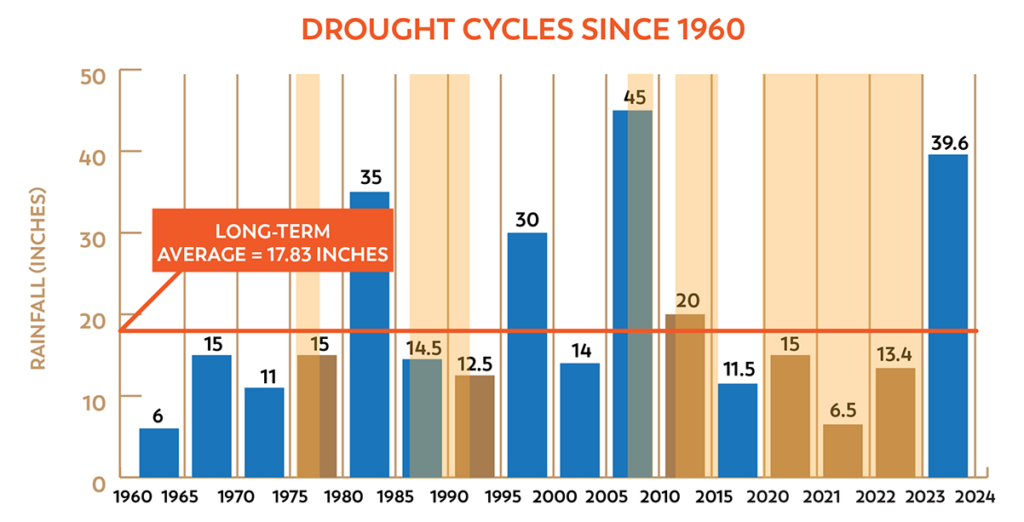
Peru is where El Niño got its name, signifying the baby Jesus and onset of Pacific Ocean warmth around Christmas. El Niño, the warm phase of the El Niño-La Niña Southern Oscillation pattern, is a major driver of weather worldwide and is often associated with hotter global temperatures and wetter conditions in portions of California. In El Niño years, warmer waters in the eastern Pacific create an active jet stream over the southern U.S. in the winter, leading to higher chances of cool and wet weather in the southwest and warmer and drier weather in the northwest.
The heavy precipitation we experienced in the winter of 2023 came at the tail end of a La Niña condition which is usually associated with drought conditions. In Fall 2023, scientists with NOAA (National Oceanic Atmospheric Administration) indicate global ocean and surface temperatures have surged to record levels in the past few months, strengthening an El Niño condition which may lead to heavy rain in some coastal areas of California. In a recent El Niño forecast by the NOAA, there is a greater than 95% chance that El Niño continues across the Northern Hemisphere through the winter or 2023 into 2024, with the chance of a strong El Niño increasing to 71%. NOAA speculates that the coming winter could even bring a “super El Niño” situation like 1997-1998.
Reducing or eliminating water deliveries to Southern California from the State Water Project signifies a significant decrease in the amount of water supplied to the region. This action is usually taken in response to drought conditions or water scarcity. It can have various impacts, including water shortages for agricultural, industrial, and residential use. These shortages can lead to conservation measures, stricter water use regulations, and potential disruptions in the affected areas.
As of April 2023, State Water Project allocations are at 100% following significant precipitation in early 2023. Prior to the year’s storms, State Water Project deliveries were projected at 0% of planned allocations for the first time in history leading into 2022. With some precipitation in late 2021, the planned allocation was raised to 15% in January. However, when the first three months of 2022 turned out to be the driest January-March three-month period in recorded history, the allocation was reduced to 5% in March.
It’s impossible to predict with specificity other than to know historically dry periods tend to last for several years or more. Climate change and extreme weather conditions, such as intense storms and intense heat, add to the uncertainty facing water managers.
As of March 2023, Governor Newsom eased restrictions previously outlined in his drought emergency executive orders following a significant year of rainfall. The state’s appeal for a voluntary 15% water conservation target was withdrawn, and the requirement for local water agencies to implement drought contingency plans was ended.
However, many cities are still limiting watering to fewer days per week and enforcing over-watering penalties. Individual cities or counties may impose mandatory water use restrictions or price increases at any time based on their needs. We encourage residents and businesses to check with their city or local water retailer for the latest water use policies and developments.
Each city is different, but most will provide customer service and conservation information and/or audits. We suggest you either call the water utility in your city or visit their websites:
- Alhambra (www.cityofalhambra.org/departments/utilities-department)
- Azusa (www.ci.azusa.ca.us/132/Light-Water)
- Monterey Park (www.montereypark.ca.gov/608/Water)
- Sierra Madre (www.cityofsierramadre.com/residents/utilities/water)
Water conservation works. During the most recent drought, cities in the San Gabriel Valley reduced water use by more than 25 percent. However, demand has increased since that time, and conservation levels during 2022 were lower than the desired voluntary 15% reduction called for by the Governor. Water savings can be achieved through water-efficient technology, equipment, vegetation, as well as greater public education efforts.
Whatever your motivation to save water – whether it’s to help your family, your community, the environment, or to save money – now is the time to become informed about conservation methods and other relatively untapped water supply solutions like recycled water, stormwater capture, and desalination.
The District provides a list of rebates for indoor and outdoor tools and appliances to assist you with your water conservation needs. This also includes an outdoor Irrigation Controller Retrofit Program that has been very popular since its inception. Additionally, the District offers grants on a rolling basis to support community conservation projects throughout our four member cities.
You may attend your city council and board of supervisors’ meetings and pay attention to state and local government action related to water. Because most water is provided to you via local water districts, water utilities or water companies, you should monitor their actions closely for information. Another suggestion is to prepare for disasters which could further stress our fragile water supplies.
FAQs | Water Supply Basics in the San Gabriel Valley
First, let’s review the basics about the San Gabriel Valley’s water supply. Our water supply system includes a variety of sources of water including groundwater replenishment, imported water, reservoirs and cyclic storage, recycled water, storm water capture, and water transfers. Thus, despite developments such as record-breaking dry weather, worsening drought conditions, reduction of imported water deliveries via the State Water Project, extreme weather conditions resulting from climate change, and implementation of voluntary water use restrictions, the San Gabriel Valley has water in reserve to meet local needs for the near future, even if the drought continues.
However, it is a reality that local water supplies are lower than we would like. Another reality is individual cities, counties, the state and water companies may act to curtail frequency of watering, impose mandatory water-use restrictions and raise water rates/pricing to curtail water use. These are actions that the San Gabriel Valley Municipal Water District has no control over but that we encourage residents and businesses to follow in the towns in which their homes and businesses are located.
The San Gabriel Valley is a distinct watershed shaped by local mountains, rivers, streams and other geological formations. A major, natural source of water for the Valley is the San Gabriel River and streams, ponds, lakes, dams and reservoirs connected to it that are located either in the San Gabriel Mountains or the Valley, itself. Beneath the Valley is the Main San Gabriel Basin, the focal point of our Valley’s water supply system. The image below shows the series of dams and reservoirs within the San Gabriel Mountains that serve the Basin, as well as the San Gabriel Canyon Spreading Grounds.
The Basin is about 100 yards below the ground, right underneath your feet, and it is underlies the Valley. Just imagine the length of a soccer or football field, but downward, deep underground. That’s where the vast majority of your water comes from. It is held in a natural holding area formed of bedrock called a water basin. This underground basin holds rainfall, snowmelt and conserved water. The illustration below simulates how a typical groundwater basin functions.
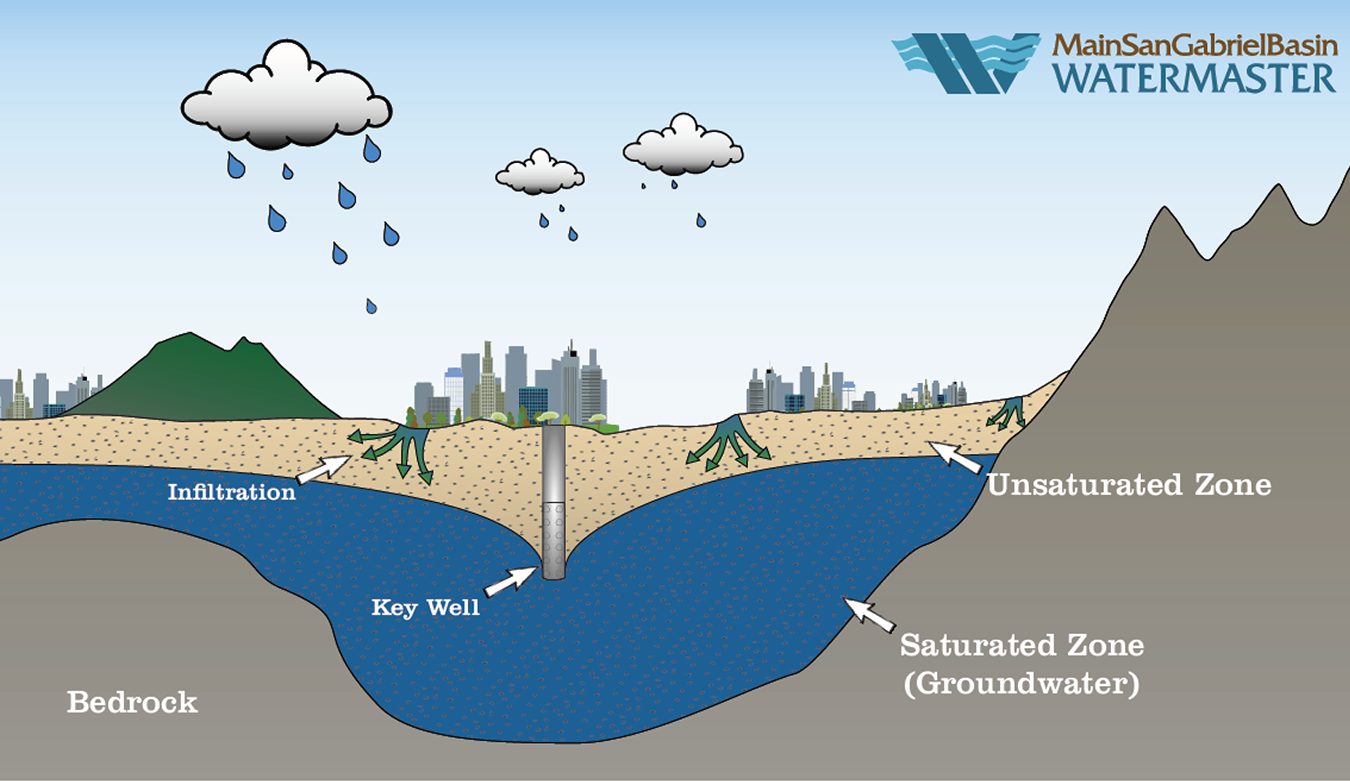
By far the largest component of local water supplies is groundwater pumping, providing about 80% of the water we use. 20% of the water we use is imported water from northern California by the State Water Project and from the Colorado River.
For more information on the Valley’s water supply, please refer to Watermaster’s educational website, “The Waters That Connect Us”.
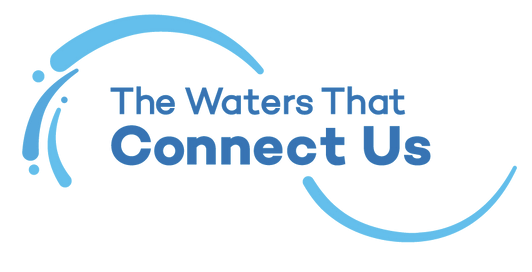
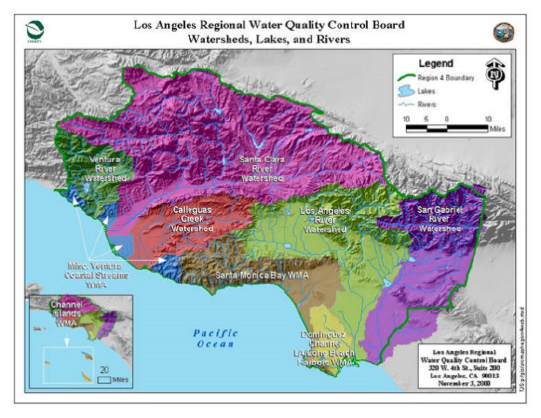
We live in the purple-colored San Gabriel River “watershed,” one of several watersheds in Los Angeles County. But we live in the Los Angeles media market. Much of the water “news” we are exposed to relates to the city of Los Angeles. However, different watersheds manage their stormwater in ways best suited to their locales. The San Gabriel Valley “water story” is unique in that 80% of the water we use is local groundwater.
Each watershed is formed by distinct topography, geology and hydrology. Decades ago, as reservoirs, dams, flood control channels, and spreading grounds were being planned, as public works and flood management personnel grappled with saving life and property, some watersheds went in the direction of building infrastructure and operating programs that “flushed” water to the ocean via storm drains as fast as possible to reduce the risk of flooding, thus, saving life and property.
Our San Gabriel River watershed was different. We, too, had to protect life and property. However, we embraced saving water for beneficial use, as well. Our region built its water infrastructure to retain and channel as much stormwater within the San Gabriel Valley as possible so it could percolate down and recharge our groundwater supplies.
Overall, the greater San Gabriel Valley captures more than 95% of stormwater, even during massive storms like we experienced earlier this year, to supplement local groundwater supplies. Data shared by the Main San Gabriel Basin Watermaster reveal that of the more than 500,000 acre-feet of stormwater captured this year in Los Angeles County, about 300,000 AF came from the San Gabriel River watershed.
Here in Southern California and the San Gabriel Valley we live in a dry, desert region. We use more water than Mother Nature provides. Supplemental sources of water (other than pumping of local aquifers or underground wells), include surface reservoir production, recycled water, storm water capture and supplies imported through wheeling arrangements or transported via aqueduct from the State Water Project and the Colorado River. When needed, the Basin holds waters we purchase from “imported” sources, such as the Sacramento-San Joaquin River Delta in Northern California and the Colorado River. Importing water is expensive and requires energy to pump it hundreds of miles. However, sometimes these imported waters are needed when rain, snowmelt and conservation aren’t enough to sustain healthy water levels in our basin. Imported water is used to fill spreading grounds which allows water to percolate or seep down to replenish groundwater.
The San Gabriel Valley Municipal Water District, formed in 1959, was created to provide a reliable supply of supplemental water for its member agencies, namely the cities of Alhambra, Azusa, Monterey Park and Sierra Madre. The District is one of 29 State Water Contractors which import water from the State Water Project, operated by the California Department of Water Resources (the District utilizes its Devil Canyon-Azusa Pipeline for this purpose).
Given the size and varied topography (mountains, foothills and valleys) of the San Gabriel Valley, it’s not surprising that groundwater levels throughout the Valley vary from location to location – different locations in the Valley have more water or more accessible water than others. And some wells in the San Gabriel Valley are polluted or contaminated. Water rights and pumping rights are complicated – for example, Monterey Park relies on water that is pumped from wells located in Rosemead. Sierra Madre draws water from the Raymond Basin while our other member cities pump water from the Main San Gabriel Basin. Thus, in 1973 the Main San Gabriel Basin Watermaster (www.watermaster.org) was created to manage and protect groundwater resources within the Main San Gabriel Groundwater Basin. The San Gabriel Valley Municipal Water District works very closely with Watermaster and other water agencies located in the San Gabriel Valley.
A widely accepted measure of our local groundwater supplies is the Baldwin Park Key Well. As the diagram below shows (this graph is updated on an ongoing, weekly basis), groundwater levels have longer periods of decline than of ascent given that most of our years are relatively dry, with the historic low level of 169.4 recorded in November 2019. The graph also displays the critical importance of cyclical storage: the black line indicating groundwater levels without storage and the higher, blue line indicating groundwater levels with cyclic storage factored in. Note that cyclic storage levels have increased since the last drought due to smart water management practices throughout the Main San Gabriel Basin.
Main San Gabriel Basin Watermaster updates and shows the Key Well level on its home page each week (www.watermaster.org).
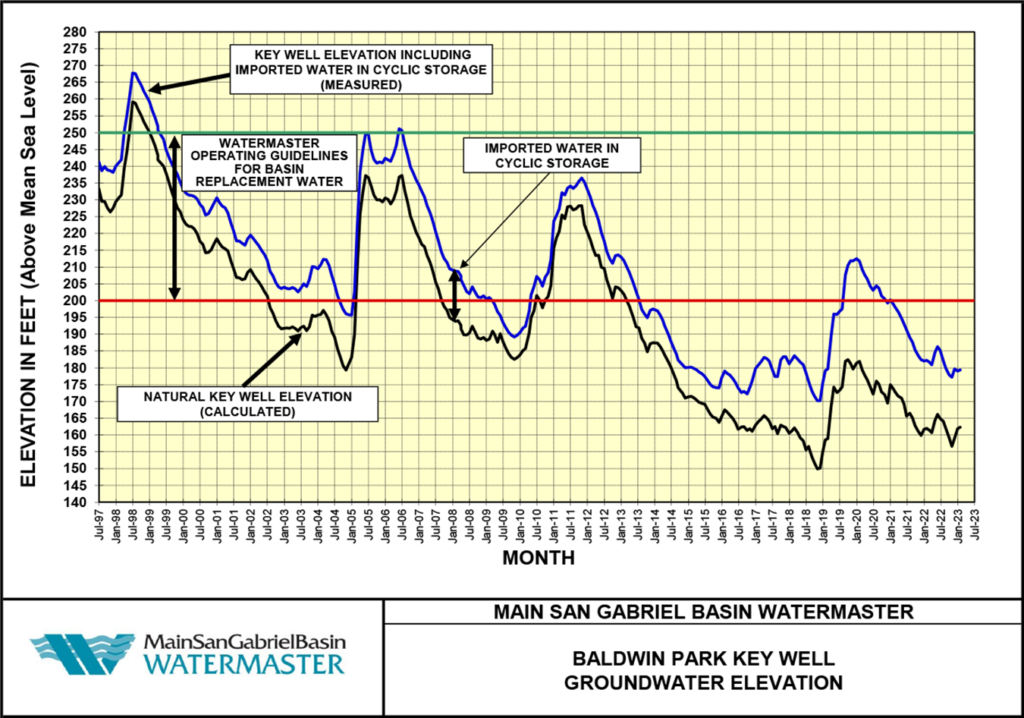
January 2023
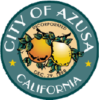 The City of Azusa draws its water primarily from Main San Gabriel Basin wells located in Azusa adjacent to spreading grounds which are located at the terminus of the pipeline operated by the San Gabriel Valley Municipal Water District. The City supplements this source of water with water from the San Gabriel River. Whenever the City’s groundwater production exceeds its water rights, untreated imported water is delivered to the San Gabriel Basin via the pipeline operated by the San Gabriel Valley Municipal Water District to replace that amount of water which was produced in excess of the City’s water rights. Water is treated, pumped to and stored in reservoirs located in the City, and then transported via the City’s water distribution system to your tap.
The City of Azusa draws its water primarily from Main San Gabriel Basin wells located in Azusa adjacent to spreading grounds which are located at the terminus of the pipeline operated by the San Gabriel Valley Municipal Water District. The City supplements this source of water with water from the San Gabriel River. Whenever the City’s groundwater production exceeds its water rights, untreated imported water is delivered to the San Gabriel Basin via the pipeline operated by the San Gabriel Valley Municipal Water District to replace that amount of water which was produced in excess of the City’s water rights. Water is treated, pumped to and stored in reservoirs located in the City, and then transported via the City’s water distribution system to your tap.
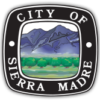 Sierra Madre’s groundwater historically came primarily from wells in the Raymond Basin and from surface water that is transported via tunnels reaching into the San Gabriel Mountains. In the recent past, Sierra Madre was 100 percent reliant on its Metropolitan Water District connection due to low groundwater levels in its local wells. In 2019 the San Gabriel Valley Municipal Water District and the City of Sierra Madre worked together to identify a long-term solution to the challenges facing the City and the District. That led to a water wheeling agreement between Sierra Madre and Arcadia that also called for construction of a joint well to be located within the City of Arcadia. The water would then be transmitted through Arcadia’s existing pipelines to Sierra Madre’s water distribution system. In January 2020, the District approved nearly $1.9 million in grant funding to begin construction of the joint well.
Sierra Madre’s groundwater historically came primarily from wells in the Raymond Basin and from surface water that is transported via tunnels reaching into the San Gabriel Mountains. In the recent past, Sierra Madre was 100 percent reliant on its Metropolitan Water District connection due to low groundwater levels in its local wells. In 2019 the San Gabriel Valley Municipal Water District and the City of Sierra Madre worked together to identify a long-term solution to the challenges facing the City and the District. That led to a water wheeling agreement between Sierra Madre and Arcadia that also called for construction of a joint well to be located within the City of Arcadia. The water would then be transmitted through Arcadia’s existing pipelines to Sierra Madre’s water distribution system. In January 2020, the District approved nearly $1.9 million in grant funding to begin construction of the joint well.
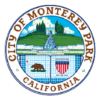 Monterey Park’s water comes primarily from San Gabriel Basin wells located in neighboring Rosemead. Whenever the City’s groundwater production exceeds its water rights, untreated imported water is delivered to the San Gabriel Basin via the pipeline operated by the San Gabriel Valley Municipal Water District to replace that amount of water which was produced in excess of the City’s water rights. Water is treated, pumped to and stored in reservoirs located in the City, and then transported via the City’s water distribution system to your tap.
Monterey Park’s water comes primarily from San Gabriel Basin wells located in neighboring Rosemead. Whenever the City’s groundwater production exceeds its water rights, untreated imported water is delivered to the San Gabriel Basin via the pipeline operated by the San Gabriel Valley Municipal Water District to replace that amount of water which was produced in excess of the City’s water rights. Water is treated, pumped to and stored in reservoirs located in the City, and then transported via the City’s water distribution system to your tap.
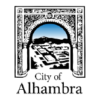 The City of Alhambra’s water supply is primarily groundwater pumped from a portion of the Main San Gabriel Basin which is referred to as the “The Alhambra Pumping Hole.” The City supplements this source of water with a direct connection to the Metropolitan Water District’s pipeline. Whenever the City’s groundwater production exceeds its water rights, untreated imported water is delivered to the San Gabriel Basin via the pipeline operated by the San Gabriel Valley Municipal Water District to replace that amount of water which was produced in excess of the City’s water rights. Water is treated, pumped to and stored in reservoirs located in the City, and then transported via the City’s water distribution system to your tap.
The City of Alhambra’s water supply is primarily groundwater pumped from a portion of the Main San Gabriel Basin which is referred to as the “The Alhambra Pumping Hole.” The City supplements this source of water with a direct connection to the Metropolitan Water District’s pipeline. Whenever the City’s groundwater production exceeds its water rights, untreated imported water is delivered to the San Gabriel Basin via the pipeline operated by the San Gabriel Valley Municipal Water District to replace that amount of water which was produced in excess of the City’s water rights. Water is treated, pumped to and stored in reservoirs located in the City, and then transported via the City’s water distribution system to your tap.
FAQs | Water Conservation
The District supports water conservation for both environmental and economic reasons. Water conservation is the easiest, most efficient and least expensive means of dealing with the drought. Every drop of water saved is a drop of water that does not need to be paid for. Every drop of water we save is water that remains in our groundwater basin. Every drop of water we save is water we don’t need to import, recycle or treat.
Water Conservation means different things to different people. For some, it means equipment or processes, such as water timers and water-efficient appliances. For others, it means human behavior, such as the length of our showers, whether we install water efficient appliances, if we leave the faucet running while we brush our teeth, or if we use a hose, rather than a broom, to clean our driveways.
The Water District supports water conservation in many ways. The Conservation section of our website provides much more information on the District’s water conservation initiatives. A principle advanced by the District’s Board more than a decade ago was to develop a strong focus on educating, informing and motivating young people about water conservation. The Board believed then and now that if young people acquire water conservation and sustainability ethics, they will hold them for a lifetime and be a positive influence on their parents, families and communities.
Other informative and educational conservation-oriented websites are:
- www.bewaterwise.com (Metropolitan Water District of Southern California)
- www.saveourwater.com (Association of California Water Agencies)
- www.theodorepayne.org (Theodore Payne Foundation)
- www.calscape.org (California Native Plant Society)
For more than a decade the District has worked closely with school districts to provide hands-on presentations, materials and grants to encourage development of sustainable water and environmental attitudes and behavior. The Covid-19 pandemic affected our ability to provide in-person services, so we’ve done our best to provide resources on-line and via “zoom” and video calls. As of January 2023, we are ramping up our in-person outreach and event participation once again.
We partner on an ongoing basis with schools, non-profit organizations and our member cities on environmental and water-related events such as Lunar New Year in January, Earth Day in April, Water Awareness Month in May, the spring portion of each school year and summer and fall concerts and park events. In spring 2023 we will introduce several new programs in conjunction with the Conservation and Education Team of the Public Water Agency Group (PWAG). Information about these programs is presently available on the website www.pwagcet.org and will be available on this website later in 2023.
Our “Home Water Survey” enables students to work with family members and friends at home to identify water saving opportunities. For more than a decade, District representatives have been guest speakers at school assemblies featuring the Survey and other water conservation information. Nearly every student graduating from high schools in our service area has participating in our Survey and school assembly program, as we’ve worked to develop a generation of young people with a strong water conservation ethic
The “Our Precious Water Resource” videos are available on-demand on our website for use in school or at home.
Our “Water Awareness Growth Chart” is available on our website for download or you may contact the district to have one mailed to your home or school (626-969-7911; info@sgvmwd.com).

The “Opportunities for Water Leadership (O.W.L.) Community Grant Program” is another great resource for youth, schools and non-profit organizations. When we first introduced the Program nearly a decade ago, we offered grants ranging up to $2,000 to fund projects showing creative approaches to water education and conservation. Since 2022, grant amounts are unlimited and the streamlined application process may be completed online any time of the year. Visit our website to learn more about eligibility and our online application . See our chart that provides examples of recent grant recipients.
Through its H2Owl Outreach Program and Speakers Bureau Program, District representatives are available to speak to schools and community and business organizations on water-related topics. We also provide tours of District facilities on a planned and requested basis. Our H2Owl mascot as well as guest speakers may be requested to appear at community events, schools and community/business meetings. When H2Owl attends events, the District usually provides free printed materials and water saving gifts. For further information or to request assistance, please contact the District (626-969-7911; info@sgvmwd.com)
What water conservation pilot projects has the District supported in member cities? Our strategy has been two-fold. First, beginning in 2009, we implemented pilot projects at highly visible, high water-consumption locations (schools, city facilities, large employers) and created partnerships with member cities and community organizations to make the pilot projects as well-known as possible. The Water District has provided approximately $12 million in grants to fund more than 25 water conservation pilot projects in our four member cities. Our goal has been both to save water and to provide information to help residents, schools, businesses and other organizations adopt water saving technology, materials and procedures for the long-term.
As “demonstration” projects, our pilot projects take place in highly visible community locations that are easy to visit and learn from. Our grants funded equipment, technology, landscaping and vegetation and promote indoor and outdoor water savings. An added objective of each grant is to foster community partnerships that involve people working together. Projects at schools and youth or community facilities typically involve youth, teachers, parents, local businesses, local non-profits, churches and school clubs. Click here to view a summary of the pilot projects.
The District’s second strategy was to incentivize non-profit schools and community/business organizations to create their own creative approaches to water conservation.
The “Opportunities for Water Leadership (O.W.L.) Community Grant Program” is another great resource for youth, schools and non-profit organizations. When we first introduced the Program nearly a decade ago, we offered grants ranging up to $2,000 to fund projects showing creative approaches to water education and conservation. Since 2022, grant amounts are unlimited and the streamlined application process may be completed on-line any time of the year. Visit our website to learn more about eligibility and our online application. See our chart that provides examples of recent grant recipients.
The District offers an extensive rebate program whereby stakeholders who purchase water-saving appliances and equipment save water and save money. Items in the District’s rebate program include: rain barrels and cisterns, water-efficient washing machines, high-efficiency toilets, “smart” and weather-based irrigation controllers, soil moisture sensors, rotating sprinkler nozzles and commercial waterless urinals. Apply for a rebate today!
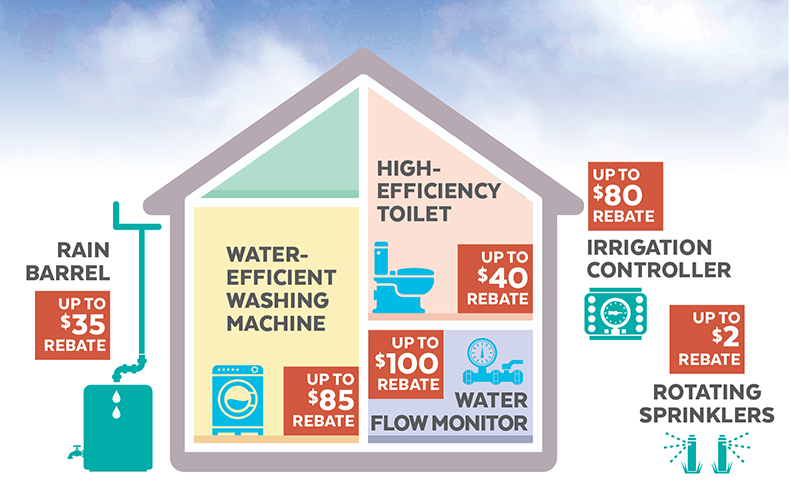
The District offers an outdoor Irrigation Controller Retrofit Program that provides qualified residents with a FREE irrigation inspection, irrigation controller and spray nozzles. The District has contracted with EcoTech Services to manage the program. If eligible, EcoTech Services will replace your old irrigation timer with a new weather-based irrigation controller installed by a landscape professional.
Since January 2022, EcoTech has performed 257 site assessments. 236 weather-based “smart” controllers have been installed in 215 properties and 5,766 sprinkler nozzles have been upgraded to water-efficient rotating nozzles. The approximate cost/value per landscape to date is $1,136.
Our website provides water-saving tips in multiple languages for residents, businesses and multi-family dwellings such as apartment buildings. In addition, the District has created a variety of educational videos.
More than 50% of water use occurs outdoors and that provides an abundance of opportunities for saving water. Water-wise plants and landscaping are among the smartest and most effective means of reducing outdoor water use. Over many decades, as people have relocated to southern California and the San Gabriel Valley from other parts of the country, they have tended to landscape like they did back home…beautiful landscaping, but not very water-efficient.
The reality is we live in an arid desert and we use more water than Mother Nature provides. Fortunately, for those with a certain aesthetic and those who love to garden, there are plants that are “native” to southern California and the San Gabriel Valley. They will survive in our warm, dry climate, they are attractive, they use less water, and they are readily available.
Different terms to describe such vegetation include “California Native Plants”, water-efficient plants and drought-tolerant plants. Water-efficient landscaping may also include “hardscapes” such as rock gardens, boulders, benches, synthetic turf and other decorative elements that use no water at all.
With the assistance of the California Native Plant Society’s website and its Garden Planner tool, the District has developed custom plant selection guides for each of our member cities. You, too, may utilize the Garden Planner tool with downloadable/printable tips on how to plant a Native Plant garden in Alhambra, Azusa, Monterey Park and Sierra Madre. In addition to plant recommendations, we’ve identified nurseries and gardening stores that specialize in native plants.
Rebates
Save Water & Money!
You can get money back from SGVMWD just for buying and installing water-efficient appliances and fixtures! Our rebate program covers a variety of products and is available to residents of Alhambra, Monterey Park, and Sierra Madre.
For residents served by Azusa Light & Water, please visit the Azusa website for rebate information.
We partner with and receive support for our program from EPA Water Sense and California Climate Investments.

For information or questions, please call (626) 969-7911 or email us at rebates@sgvmwd.com.
Completed applications may be submitted online or by email to rebates@sgvmwd.com.
Indoor Rebates
$85
WATER-EFFICIENT WASHING MACHINENew machines save you money by using less water, detergent and electricity. These models are gentler on clothes and more water is extracted during the spin cycle, so less drying time is needed.
Click to Apply$40
PREMIUM HIGH-EFFICIENCY TOILETThe bathroom is a great place to start saving water, since the majority of indoor use (30%) goes toward flushing the toilet. Upgrading to a high-efficiency toilet results in an annual water savings of 20,000 gallons for a family of four!
Click to Apply$150
COMMERCIAL WATERLESS URINAL REBATEWaterless urinals have numerous benefits beyond saving up to 45,000 gallons of water per year for each unit. They also protect our waterways and oceans because they don’t produce wastewater discharge, and they reduce maintenance costs because they are easier to clean, making them worth the investment.
Click to ApplyOutdoor Rebates
$35
PER RAIN BARREL OR UP TO $350 PER CISTERNThis passive conservation tool helps you conserve drinking water and reduce stormwater runoff. A half-inch of rain from your home roof is enough to fill a 55-gallon barrel! The collected water can be used for all your outdoor water needs.
Click to Apply$80
WEATHER-BASED IRRIGATION CONTROLLERReduce over-watering by about 40 gallons per day by installing a controller that automatically adjusts irrigation based on weather and soil moisture conditions. Smart controllers are the key to healthy plants and compliance with drought-related water use restrictions.
Click to Apply$80
SOIL MOISTURE SENSOR SYSTEMKeep your lawn and plants hydrated and healthy and save water by monitoring soil moisture conditions. These easy-to-use probes pay for themselves very quickly – and the rebate helps!
Click to Apply$2
PER ROTATING SPRINKLER NOZZLE REBATEUp to 70% of household water consumption is used outside. But your landscape actually needs much less water than you think. By switching to rotating sprinkler nozzles, you can reduce total water usage by as much as 20%.
Click to Apply$100
PER FLOW MONITOR DEVICE REBATEFlow monitoring devices are a new technology that give customers information about their water use, potential leaks, and incidences of high water use.
Click to ApplySGVMWD Rebates Program Application
Irrigation-Efficient Programs
Irrigation Controller Retrofit Program
The District offers an outdoor Irrigation Controller Retrofit Program that provides qualified residents with a FREE irrigation inspection, irrigation controller and spray nozzles. The District has contracted with EcoTech Services to manage the program. If eligible, EcoTech Services will replace your old irrigation timer with a new weather-based irrigation controller installed by a landscape professional.
Since January 2022, EcoTech has performed 257 site assessments. 236 weather-based “smart” controllers have been installed in 215 properties and 5,766 sprinkler nozzles have been upgraded to water-efficient rotating nozzles. The approximate cost/value per landscape to date is $1,136.
For more information call (866) 308-8391.
*Commercial and HOA properties may be eligible if funding is available. Please contact EcoTech Services at (866) 308-8391 for further information.
Program Features:
- Irrigation system inspection
- Replacement of existing irrigation controller
- Controller programming and training customized for your home
- Sprinkler nozzle retrofit/replacement on existing spray heads
Eligibility:
- Residential water customers in Alhambra, Monterey Park, Azusa and Sierra Madre
- Must have a working irrigation system with a controller
Value:
- Up to $1,000 in equipment and service (one controller per customer)
- Save water and save money!
How to Apply:
- First Come First Serve: Time and funding are limited
- Contact the District’s partner, EcoTech Services, at 866-308-8391 or ecotechservices.net
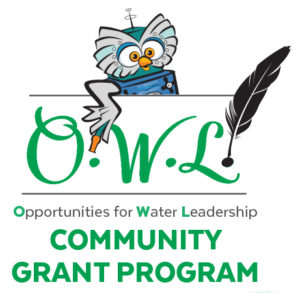
O.W.L. Community Grant Program
(Opportunities for Water Leadership)
The O.W.L. Community Grant Program began in 2017. We invite schools and non-profit organizations in our member cities of Alhambra, Azusa, Monterey Park and Sierra Madre to submit a proposal to create a “water-wise” project in your community. We’ll provide the funding if you identify partners, organize activities, manage the project’s completion and share its results locally. While grants ranged from $200-2,000 since the program’s inception in 2017, as of April 2022, there are no longer limits on the amount applicants may seek.
Objectives
- To involve schools, and non-profit community and business groups in “water-wise” solutions
- To offer funding that supplements labor and other contributions by partnering groups
Eligibility
- Schools – teachers, departments, student clubs, student groups, athletic teams, PTAs
- Non-Profit Community Organizations – environmental, churches, scouting, service organizations, youth
- Eligible cities: Alhambra, Azusa, Monterey Park and Sierra Madre
Funding
- Grant proposals may be for any amount
- One grant per recipient per fiscal year
- Funding is limited, apply today!
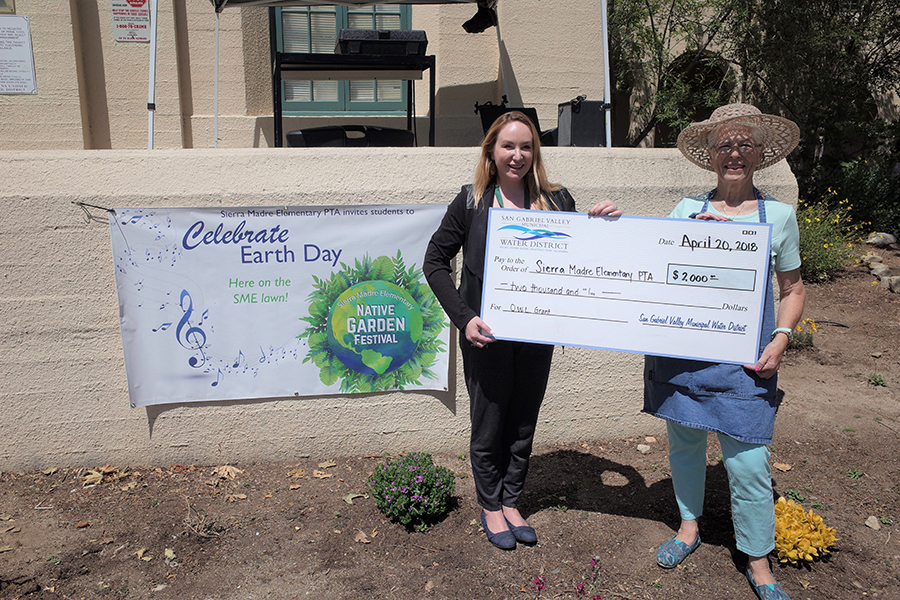
Sierra Madre Elementary School Earth Day Native Garden Festival
Community Projects
Check out the innovative community improvements below that have been made with OWL grants!
Examples of Eligible Projects
- Water-wise landscaping
- Turf removal
- Water-wise irrigation
- Storm water capture
- Grey water; recycled water
- Erosion control
- Waterway cleanup (lakes, streams, ponds)
- Forest restoration
- Water quality
- Science projects/Water conservation curriculum development
- Poster/Essay contests
- Youth Network/Club Development • Awards/Incentives
O.W.L. Grant Applications
The application process for OWL grants is easy! Just click on the button below for an electronic application and answer a few questions about your organization and proposed project. The District may require an interview and/or a presentation.
If you have questions about the program, please contact Evelyn Reyes at 626-969-7911 or ereyes@sgvmwd.com.
Earth Day O.W.L. Grants for Teachers, Students and School Clubs
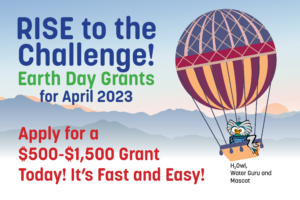 The 2023 Earth Day OWL Grant application period is now closed.
The 2023 Earth Day OWL Grant application period is now closed.
Schools (all grade levels) in Alhambra, Azusa, Monterey Park, and Sierra Madre are encouraged to check back in with us early next year for 2024 Earth Day Grant opportunities.
Earth Day is April 22, 2024. Water education-themed ideas such as assemblies, presentations, festivals, prizes and awards, picnics, essay contests, poster contests, photo contest, video creation, tree/vegetation planting, leak detection, rain barrels and more encouraged.
If you have questions about the program, please contact Evelyn Reyes at 626-969-7911 or ereyes@sgvmwd.com.
Earth Day O.W.L. Grant Application
Water Saving Tips
The District has compiled numerous conservation tips and resources and offers them here for easy reference and printing.
We offer PDFs of the documents in English, Spanish and Chinese. Please feel free to download them and share the information with family and friends. We will continue to post about water-saving pilot and demonstration programs and share details with our local newspapers and member cities.
If you have ideas about how to save water that you’d like to share with others, please either email your comments to: info@sgvmwd.com or call us at 626-969-7911.
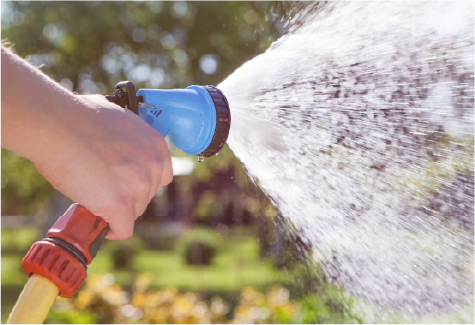

Saving water in apartment buildings
Water conservation is easy and important for residents, property managers and owners of old and new apartment buildings. Indoors, residents can save water by adopting water-wise behavior, fixing leaks and notifying their property manager/owner of leaks and water waste. Property managers/owners have many opportunities to install water-wise appliances in dwelling units and common areas such as laundry rooms and pools/spas, to plant water-wise vegetation, and to install irrigation controllers and sub-meters. Saving water saves money, too!
Native Plant Gardening Tips
More than 50% of most homeowners’ water bills are for outdoor water use. Water-wise gardening practices can cut your water use by half and still keep your landscaping green and healthy.
Water-wise gardening involves plant selection, weed abatement, hardscapes, irrigation installation, watering schedules and insect control. It can get complicated, so having a good plan is important. Many people love to garden, themselves, while others seek out professional help from landscapers.
While there are many websites that may assist you, two of our favorites are of the Theodore Payne Foundation and the California Native Plant Society. Each of these sites feature California Native Plants which use 1/7th the water of traditional vegetation.
Custom Plant Guides for Our Member Cities
The Theodore Payne Society With the assistance of the California Native Plant Society’s website and its Garden Planner tool , the District has developed custom plant selection guides for each of our member cities. You, too, may utilize the Garden Planner tool by visiting the website. Featured below are downloadable/printable tips on how to plant a Native Plant garden in Alhambra, Azusa, Monterey Park and Sierra Madre. In addition to plant recommendations, we’ve identified nurseries and gardening stores that specialize in native plants.
Gardening Tips to Help You Get Started
- Observe the pattern of runoff in your yard when it rains. You can create berms, swales and other contours to slow the flow and catch the water so it can be used by your plants.
- Use drip systems, soaker hoses and other efficient irrigation methods that apply water close to the plant roots. Keep in mind that plants adapted to dry summers need less water a few years after planting.
- Add compost or mulch to the soil. Compost helps the soil hold water and adds nutrients needed for plant growth. Mulch prevents the soil from overheating and drying out, reduces weeds and slows erosion. Use 2 to 4 inches underneath plants and shrubs.
- Gather rainwater in buckets and save it for later use in your garden.
- Avoid over pruning or forcing plants to grow into unnatural shapes.
- Layer plants to make shade and use species that are native to the area.
- Observe the natural shade and sun of your yard and plan your garden accordingly.

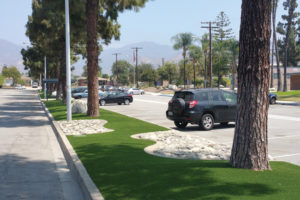
Azusa_MediaPilot_web
Azusa Median Project
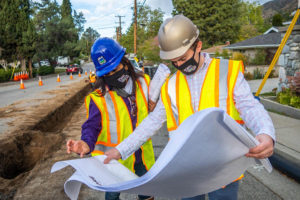
SM_WaterMainConstruction_web
Sierra Madre Water Main Construction
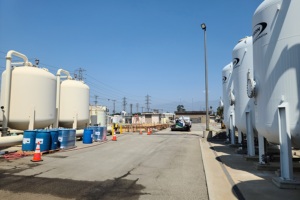
MP_WaterTreatment_sml
Monterey Park PFAS/PFOA Water Treatment Facility
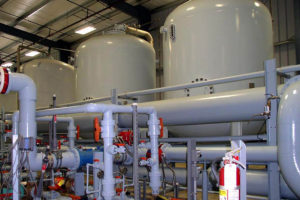
Alhambra Water Treatment Plant_web
Alhambra Water Treatment Facility
Water Supply, Water Quality and Water Conservation Pilot Projects
The Water District has provided approximately $20 million of zero-interest loans and grants to support water supply, water conservation and water quality projects in member cities. Our objectives have included providing information to help people, schools, and community and business organizations adopt water-saving technology, materials and procedures. Our strategy has been to implement pilot projects at highly visible, high water-consumption locations.
| Azusa | Irrigation | Landscape | Technology |
|---|---|---|---|
| Median Water and Tree Saving Project (2016) | • | • | |
| Mountain View Elementary School (2014-2016) | • | • | |
| Paramount Elementary School (2014-2016) | • | • | |
| Azusa Pacific University (2010-2011) | • | • | • |
| San Gabriel Canyon Gateway Center (2009-2010) | • | • | |
| Department of Light and Water (2009-2010) | • | • | |
| Memorial Park, North Recreation Center (2009-2010) | • | • | |
| Azusa Chamber of Commerce (2009-2010) | • | • |
| Sierra Madre | Irrigation | Landscape | Technology |
|---|---|---|---|
| Water Main Construction (2021-2022) | • | ||
| Joint Well Project (2020) | • | ||
| Automated Meter Reading (2014-2017) | • | ||
| City Hall (2014-2015) | • | • | • |
| Sierra Madre School (2011-2012) | • | • | |
| MWD Emergency Connection (2007-2011) | • | ||
| Sierra Vista Park (2009-2010) | • | • | • |
| Sturtevant Street Flood Control Right of Way (2009-2010) | • | • | |
| Miramonte Reservoir/Mt. Wilson Trailhead (2009-2010) | • | • |
| Monterey Park | Irrigation | Landscape | Technology |
|---|---|---|---|
| PFAS/PFOA Water Treatment Facility (2021-2022) | • | ||
| Demonstration Gardens (2015-2016) | • | • | • |
| Macy Intermediate School (2014-2015) | • | • | |
| Brightwood Elementary School (2014-2015) | • | • | |
| California Native Median Project (2011-2012) | • | • | |
| Automated Meter Reader (AMR) (2009-2010) | • | • | • |
| City Hall Planters and Smart Controller (2009-2010) | • | • | • |
| Alhambra | Irrigation | Landscape | Technology |
|---|---|---|---|
| Automated Meter Reading (2014-2017) | • | ||
| City Hall (2015-2016) | • | • | |
| Fire Station (2014-2015) | • | • | |
| West San Gabriel Valley YMCA (2013-2014) | • | • | • |
| The Alhambra Urban Community (2011-2012) | • | • | • |
| Gateway Plaza (2009-2010) | • | • | |
| Alhambra Water Treatment Facility (2008) | • |
